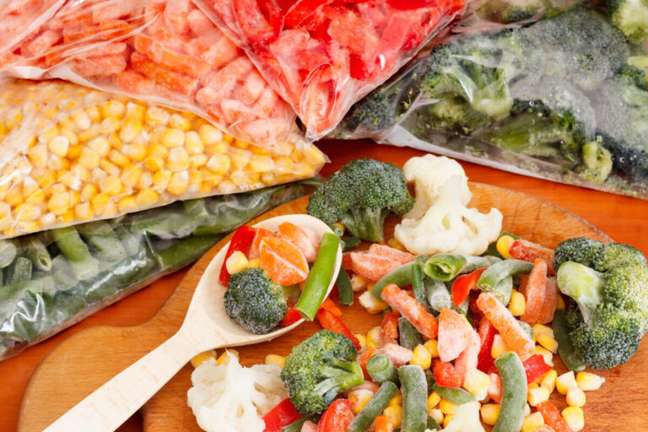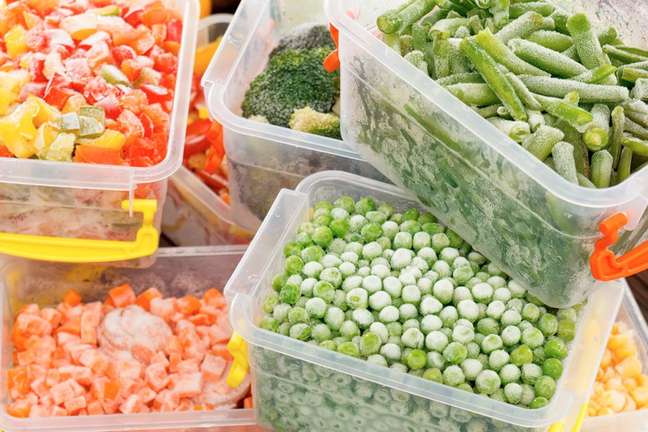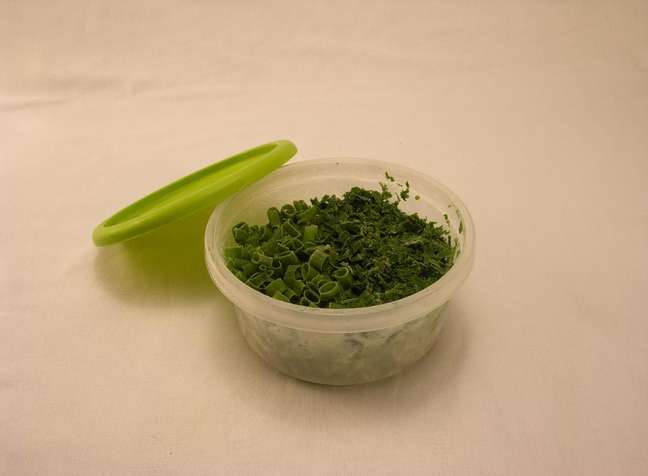
Do frozen foods lose nutrients? This is the question that crosses the mind of all those who cannot give up the convenience of a good frozen packed lunch. In the frenzy of routine, the habit of freezing the meals of the week has become a great alternative. However, the doubt remains and the answer is yes, but very little.
If we make a list of the pros and cons of freezing food, you can see that the benefits outweigh the factor of minimal nutrient loss. Among the cons we will have that: with freezing you can lose about 10% of nutrients, proteins, minerals and vitamins. On the other hand, for some foods, a similar share of losses occur with cooking itself!

In addition, by counting the points in the list of professionals, freezing food allows for a longer shelf life. Therefore, there is the use of leftovers, the preservation of seasonal vegetables and fruit and avoiding waste.
So, the way you handle these foods – from sorting, to preparing for freezing and even to the way they defrost – determines the preservation of their nutrients, tastes, looks, smells and even if there is a proliferation of microorganisms. So, get to know the step-by-step process of freezing and thawing, which makes food last up to 12 months:
1. Selection of food
The first step in preserving the nutrients, colors, flavors and textures of frozen foods is selection. Understanding which foods can be stored and what is the best technique for the process to go well is essential.
fruit
Avoid freezing fruit – or any food that will be eaten raw – because inevitably there will be losses. If these foods will be used in recipes in the future, such as in shakesjuices, smoothies or cakes, they prefer to freeze in the form of puree or pulp.
Vegetables, legumes and dairy products
Vegetables in general can be frozen without damage. And the same goes for legumes, such as beans and chickpeas. In the dairy section you can also freeze milk, cheese and yogurt, but it is preferable to use it in recipes, as there are some variations in texture.

Meat, bread and sweets
Did you know that bread, sweets and cold cuts of all kinds can also be frozen? With raw dough or with these ready-made foods, you can use the freezer for its conservation! The only difference is that, compared to frozen foods without seasoning, the shelf life is considerably shorter, being about 1 month, depending on the recipe.
2. Preparation for freezing
Once the food to be frozen has been selected, cleaning and preparation are the next steps. The fruits must be washed and, as explained in the previous topic, they must only be used in recipes and – in order not to become too “ugly” – it is preferable that they be preserved in the form of puree or pulp.
Meats must be frozen raw and without seasonings. After defrosting, the meat can only return to the Freezer when it is in a ready dish, such as in an escondidinho or in a lasagna, for example. Remember that you don’t need to wash meat to freeze it!
Do frozen foods lose nutrients? Get to know the whitening technique
For vegetables, the blanching technique is excellent in order to preserve the nutrients as much as possible. First, cook the food in boiling water or steam for 2-15 minutes, depending on the food. Then, soak the vegetables in ice water for the cooking time. Finally, freeze.
3. Choice of packaging
Do frozen foods lose nutrients? Well, how many of these nutrients will be lost and how many will be stored are determined by this step. However, it is not complicated: choose well-sealed packages and jars.

Smaller portions of frozen foods are great advice! So if you live alone, choose smaller containers and dose what will actually be used in your meals.
Packaging ready for the freezer? Don’t forget to write down the day the freezing took place so that you can check the shelf life.
4. Correct defrost
When it’s time to defrost, never place food at room temperature, in the sun or under hot water! Ideally, food should be thawed, still in a sealed container, at the bottom of the refrigerator. To do this, simply take the container out of the freezer a day earlier.
Sometimes we forget to defrost exactly that main ingredient for lunch or dinner. In these cases, place the pot under running cold water or immersed (changing the water every 30 minutes). Also remember that some foods, such as vegetables, can be defrosted during cooking.
Source: Terra
Benjamin Smith is a fashion journalist and author at Gossipify, known for his coverage of the latest fashion trends and industry insights. He writes about clothing, shoes, accessories, and runway shows, providing in-depth analysis and unique perspectives. He’s respected for his ability to spot emerging designers and trends, and for providing practical fashion advice to readers.








